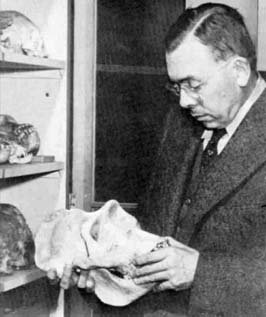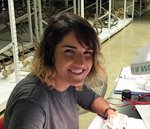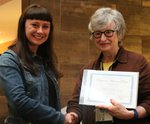
 This prize was created in honor of Earnest Albert Hooton (1887-1954). Professor Hooton was born in Clemansville, Wisconsin, and educated in the classics at Lawrence College, Appleton, Wisconsin and the University of Wisconsin. As a Rhodes Scholar at Oxford University, he developed a strong interest in physical anthropology, archaeology, and prehistory. Upon his return to the United States, he took an appointment in the Department of Anthropology at Harvard University, where he remained until his death. Professor Hooton had diverse research interests that included skeletal biology, criminal anthropology, constitutional studies, and primatology. Professor Hooton was a superb teacher and trained many of the academic practitioners of physical anthropology who were active in America during the first part of the twentieth century. Professor Hooton was active in the American Association of Physical Anthropologists and served a term as its president (1936-38). Earnest Hooton died in Cambridge, Massachusetts, on May 3, 1954.
This prize was created in honor of Earnest Albert Hooton (1887-1954). Professor Hooton was born in Clemansville, Wisconsin, and educated in the classics at Lawrence College, Appleton, Wisconsin and the University of Wisconsin. As a Rhodes Scholar at Oxford University, he developed a strong interest in physical anthropology, archaeology, and prehistory. Upon his return to the United States, he took an appointment in the Department of Anthropology at Harvard University, where he remained until his death. Professor Hooton had diverse research interests that included skeletal biology, criminal anthropology, constitutional studies, and primatology. Professor Hooton was a superb teacher and trained many of the academic practitioners of physical anthropology who were active in America during the first part of the twentieth century. Professor Hooton was active in the American Association of Physical Anthropologists and served a term as its president (1936-38). Earnest Hooton died in Cambridge, Massachusetts, on May 3, 1954.
Selected Works of Earnest Albert Hooton
Hooton EA, and Willoughby CC (1920) Indian village site and cemetery near Madisonville, Ohio. Cambridge, Mass.: The Museum.
Hooton EA (1925) The ancient inhabitants of the Canary Islands. Cambridge: Mass., Peabody museum of Harvard university.
Hooton EA, Rihan HY, and Reynolds E (1930) The Indians of Pecos pueblo, a study of their skeletal remains. New Haven: Pub. for the Department of Archaeology, Phillips Academy, Andover, Mass., by the Yale University Press.
Hooton EA (1937) Apes, men, and morons. New York: G.P. Putnam's Sons.
Hooton EA (1939a) The American criminal; an anthropological study. Cambridge, Mass.: Harvard University Press.
Hooton EA (1939b) Twilight of man. New York: Putnam.
Hooton EA (1940) Why men behave like apes and vice versa; or, Body and behavior. Princeton: Princeton University Press.
Hooton EA (1942) Man's poor relations. Garden City, N.Y.: Doubleday, Doran & company, inc.
Hooton EA (1945a) A survey in seating. [Cambridge]: Harvard University, Dept. of Anthropology, Statistical Laboratory.
Hooton EA (1945b) "Young man, you are normal"; findings from a study of students. New York: Putnam's Sons.
Hooton EA (1946) Up from the ape. New York: The Macmillan Company.
Hooton EA, Dawson H, and Dupertuis CW (1955) The physical anthropology of Ireland. Cambridge: The Museum.
Hooton EA, and Dupertuis CW (1951) Age changes and selective survival in Irish males. [Ann Arbor? Mich.]: American Association of Physical Anthropologists.
Hooton EA (1967) Indian village site and cemetery near Madisonville, Ohio. [New York: Kraus.
Hooton EA (1968) Crime and the man. New York: Greenwood Press.
Hooton EA (1969) The American criminal; an anthropological study. [1] The native white criminal of native parentage. New York: Greenwood Press.
 Marianne Brasil, University of California, Berkeley. Morphological integration and modularity in the humerus of modern humans
Marianne Brasil, University of California, Berkeley. Morphological integration and modularity in the humerus of modern humans Mareike Janiak, Rutgers University. "Duplication and convergent evolution of the pancreatic ribonuclease gene (RNASE1) in a non-colobine primate, the mantled howler monkey (Alouatta palliata)"
Mareike Janiak, Rutgers University. "Duplication and convergent evolution of the pancreatic ribonuclease gene (RNASE1) in a non-colobine primate, the mantled howler monkey (Alouatta palliata)" Kate McGrath, George Washington University. “Quantifying linear enamel hypoplasia in Virunga mountain gorillas and other great apes”
Kate McGrath, George Washington University. “Quantifying linear enamel hypoplasia in Virunga mountain gorillas and other great apes”
Copyright © 2025 American Association of Biological Anthropologists.
Site programming and administration: Ed Hagen, Department of Anthropology, Washington State University